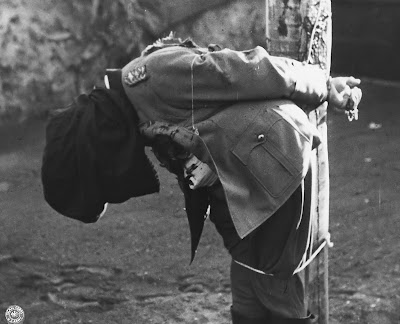The Execution of German GENERAL Anton Dostler in World War II



Anton Dostler (Munich, May 10, 1891 – Aversa, December 1, 1945) was a general of the infantry in the regular German Army during World War II. In the first Allied war trial after the war, Dostler was found guilty of war crimes and executed by a firing squad.
General Dostler ordered and oversaw the unlawful execution of fifteen captured US Soldiers. The soldiers were sent behind the German lines with orders to demolish a tunnel that was being used by the German army as a supply route to the front lines. They were captured and upon learning of their mission, Dostler ordered their execution without trial. The US soldiers were wearing proper military uniforms and carried no civilian or enemy clothing and were in compliance with Hague Convention to be considered non-combatants after their surrender. Under the 1907 Hague Convention on Land Warfare, it was legal to execute “spies and saboteurs” disguised in civilian clothes or enemy uniforms but excluded those who were captured in proper uniforms. Since fifteen U.S. soldiers were properly dressed in U.S. uniforms behind enemy lines and not disguised in civilian clothes or enemy uniforms, they were not to be treated as spies but prisoners of war, which Dostler violated. They shot the Americans and buried them in a ditch by their field headquarters.
The general was convicted and sentenced to death by an American Military Tribunal. The trial found General Dostler guilty of war crimes, rejecting the defense of superior orders. He was sentenced to death and shot by a firing squad on December 1, 1945 in Aversa. The execution was photographed on black and white still and movie cameras.
https://www.youtube.com/watch?v=0OGudZ-K5Xs
Comments
Post a Comment